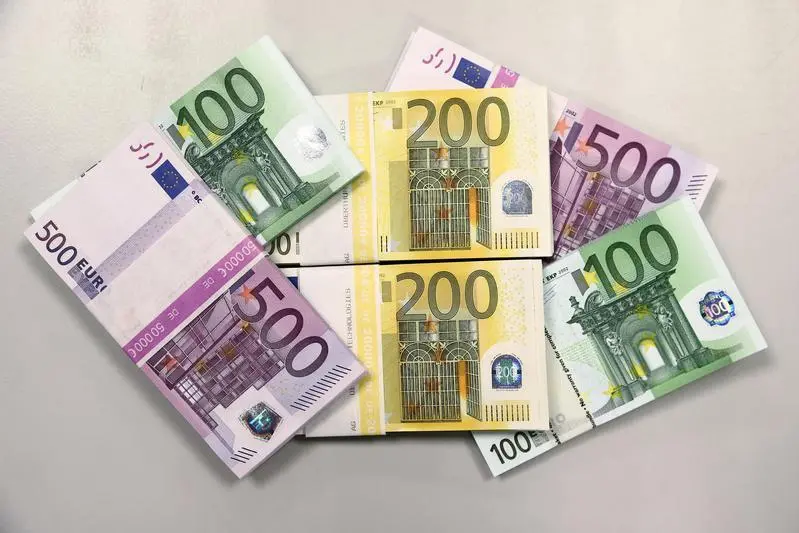PHOTO
Euro area yields edged higher on Wednesday, catching up with the sharp rise of their U.S. peers late on Tuesday.
However, government bond investors were on hold ahead of German inflation data, which could provide further clues about the European Central Bank's monetary path, and the Federal Reserve’s Open Market Committee minutes later in the session.
German figures, which usually set the tone of the bond markets, will be released on Thursday morning, while euro zone data will be published the day after.
Money markets priced in 159 basis points (bps) of rate cuts by year-end, from 163 basis points (bps) late on Wednesday. Markets discounted around 165 bps of rate cuts at the end of last year.
Germany's 10-year government bond yield, the benchmark for the euro area, rose 2.5 bps to 2.09%.
U.S. Treasury yields were up in London trade, with the 10-year rising by 1.5 bps to 3.96%, after hitting a 2-week high at 4.023% the day before, while U.S. traders were lowering expectations for rate cuts in 2024 to 150 bps from more than 160 bps last week.
Markets also await U.S. jobs data on Thursday and Friday.
"The job openings data will also be gleaned, but the bigger market impulse can come from the FOMC minutes, ones that will refer back to the pivotal 13 December meeting," said Garvey Padhraic, regional head of research Americas at ING.
"The odds are they won't be nearly as dovish as (Fed) Chair (Jerome) Powell was at the press conference," he added.
Markets were also watching growing signs of geopolitical risk, which could impact supply chains and fuel a fresh inflation rise.
Oil prices were little changed in Asian trade after sharp moves earlier in the week, as markets weighed concerns about the U.S. economy against potential supply disruptions.
Iranian-backed Houthi militants in Yemen have stepped up attacks on vessels in the Red Sea to show their support for Palestinian Islamist group Hamas fighting Israel in Gaza.
Italy's 10-year government bond yield, the benchmark for the euro area periphery, rose 4 bps to 3.76%.
The gap between Italian and German yields was at 166 bps after dropping below 160 bps last week.
A slower-than-expected ECB plan to reduce Pandemic Emergency Purchase Programme (PEPP) reinvestment, a European Union stability pact allowing more time to cut public debt and expectations for aggressive rate cuts, recently supported demand in Italian government bonds. (Reporting by Stefano Rebaudo, editing by Elaine Hardcastle) ;))












